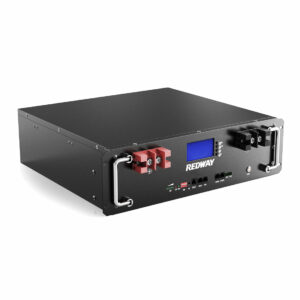Which is better wall mount or server rack batteries?
Wall-mounted batteries and server rack batteries serve distinct purposes based on deployment needs. Wall-mounted units save floor space and suit small-scale applications like residential solar storage. Server rack batteries, standardized for 19″ racks, enable scalable energy solutions in data centers and commercial settings. Key differences include energy density, thermal management, and integration complexity.
What are the structural differences between wall-mount and rack batteries?
Wall-mounted batteries use vertical casings with integrated cooling, while rack batteries adopt horizontal 1U-4U modular designs. Rack units prioritize hot-swappability and parallel connectivity, whereas wall systems favor single-unit simplicity. Pro Tip: Rack batteries require 10-15% overhead space for airflow to prevent thermal throttling

Wall-mounted systems typically employ monobloc designs with capacities under 10kWh, using convection cooling for quiet operation. In contrast, server rack batteries feature modular cells in 3-5kWh increments, often requiring forced-air cooling at >20kWh configurations. For example, a 48V 100Ah wall battery might occupy 0.3m² wall space, while a comparable rack system needs 4U (17.8cm vertical) in a server cabinet. Transitional note: While wall units simplify installation, rack systems dominate where future expansion is anticipated.
How do scalability needs influence battery choice?
Rack batteries excel in multi-unit deployments, supporting parallel connections up to 16 units. Wall-mounted systems usually cap at 2-4 parallel links due to BMS limitations. Pro Tip: Rack systems reduce cabling complexity through standardized busbar connections—wall units often need custom wiring beyond 3 modules.
Data centers requiring 50kWh+ storage benefit from rack batteries’ additive architecture. A 10kWh wall system would need 5 separate units with individual inverters, while rack versions achieve this through 2×5kWh modules sharing one PCS. However, wall-mounted options work better for retrofits in tight spaces—imagine upgrading a garage solar system without floor space for server racks. Practically speaking, rack systems demand upfront infrastructure investment but offer long-term flexibility.
| Factor | Wall-Mount | Rack |
|---|---|---|
| Max Parallel Units | 4 | 16 |
| Typical Deployment | 5-15kWh | 10-200kWh |
What maintenance advantages do rack batteries provide?
Rack batteries enable hot-swappable maintenance—faulty modules can be replaced without system shutdown. Wall-mounted units require full power cycle for repairs. Transitional note: Beyond accessibility, rack systems simplify cell balancing through centralized BMS monitoring.
In a telecom tower backup scenario, technicians can slide out a failing 5kWh rack module in minutes while the remaining 45kWh stays operational. Wall batteries would necessitate temporary generator hookups during repairs. Pro Tip: Rack battery trays with roller rails reduce replacement labor by 70% compared to wall-unit unmounting. However, wall systems avoid rack maintenance costs—no need for specialized IT staff or rack cleaning services.
RackBattery Expert Insight
FAQs
Can wall-mounted batteries be used in data centers?
Only for auxiliary loads under 10kWh—main UPS systems require rack batteries for N+1 redundancy and scalable runtime.
Do rack batteries cost more per kWh?
Initially yes (15-20% premium), but total cost of ownership dips below wall units at >30kWh due to shared infrastructure and reduced labor.



